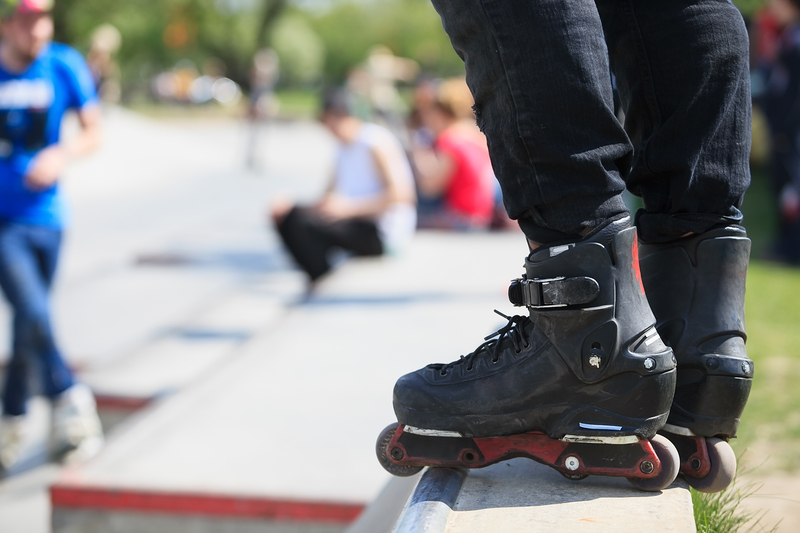Essential Tips for Moving Your Mattress and Bed
Posted on 24/06/2025
Moving to a new home is both exciting and overwhelming, especially when it comes to transporting bulky and delicate items like your mattress and bed. Whether you're relocating across town or across the country, ensuring your bed gets to your new place in excellent condition is crucial for your comfort and investment. In this comprehensive guide, we will share essential tips for moving your mattress and bed to help you navigate the moving process efficiently and safely.
Why Proper Mattress and Bed Moving Matters
Your mattress and bed frame are some of the most valuable items in your home, not just in terms of cost, but also in their impact on your health and well-being. Incorrectly moving these items can result in damage, stains, or even lost parts, turning an exciting move into a logistical nightmare. This is why it's important to follow best practices and use the right equipment.
Risks of Improperly Moving Your Mattress and Bed
- Physical Damage: Tears, punctures, and sagging can occur when mattresses are bent or handled roughly.
- Hygiene Issues: Exposing your mattress to dirt, moisture, and insects can lead to costly cleaning, infestations, and health risks.
- Missing Components: Bed frames often require disassembly. Lost hardware can create major headaches when reassembling.

Preparation Before the Move
Proper preparation is key to a smooth move. Use these step-by-step mattress moving tips to ensure everything goes as planned.
1. Gather the Right Supplies
Being well-equipped can make all the difference when moving your bed and mattress. Here's what you'll need:
- Mattress Bag or Cover: To protect against dirt, moisture, and pests.
- Furniture Dolly or Hand Truck: For easy transport, especially for heavy mattresses or large bed frames.
- Moving Blankets: Protect bed parts and your home during transport.
- Plastic Wrap and Packing Tape: Secure bed slats and frame parts together.
- Toolbox: For disassembly and reassembly of bed frames.
- Zip Bags or Containers: To store screws, bolts, and small hardware pieces.
- Labels and Markers: To label parts for quick identification and assembly.
2. Clean Your Mattress and Bed Frame
To ensure a fresh start in your new home, thoroughly clean your mattress and bed frame before moving them. Vacuum the mattress and use an upholstery cleaner for spot treatments. Dust and wipe down the entire bed frame and let every part dry completely before wrapping and packing.
3. Measure Doorways, Hallways, and the Moving Truck
One of the most common mistakes people make is failing to measure their mattress, bed frame, and moving paths. Make sure your mattress will fit through all doorways, hallways, and staircases. Also, plan how you'll load everything into your moving vehicle to minimize lifting and rearranging.
How to Move Your Mattress Easily and Safely
The mattress is often the most cumbersome part of moving your bed. Follow these mattress moving essentials:
1. Protect Your Mattress With a High-Quality Mattress Bag
A mattress bag is an inexpensive but essential investment. Slip your mattress into the bag and seal it with tape to keep out dust, bugs, and moisture. For long-distance moves or moves in the rain, double-bagging offers extra protection.
2. Get Help and Plan Your Route
Mattresses are bulky and surprisingly heavy. Recruit at least one friend or professional mover to help. Plan the best route through your home, removing obstacles in advance. This minimizes risk of injury and property damage.
3. Move the Mattress Without Folding (If Possible)
If your mattress is spring-based (like innerspring or hybrid), never fold or bend it as this can damage the internal structure. For foam or latex mattresses, some flexibility is allowed, but check your manufacturer's guidelines. Always lift the mattress on its side and slide it whenever possible.
4. Use a Dolly for Transport
A dolly saves your back and makes it easy to transport the mattress to the moving truck. Place the mattress vertically on the dolly and secure it with straps. This is especially helpful when navigating stairs or long hallways.
5. Secure the Mattress in the Moving Vehicle
Lay the mattress flat in the moving truck, avoiding sharp objects or heavy items on top. If space doesn't allow, you can stand it upright--just make sure it is well-secured to prevent bending or slipping during transit.
Moving Your Bed Frame: Disassembly and Transportation
Bed frames come in various styles, from simple metal platforms to elaborate wooden sleigh beds. Following these steps will ensure safe and efficient bed frame moving:
1. Disassemble the Bed Frame
Most bed frames must be taken apart to move. Refer to the manufacturer's instructions, if available. Typical steps include:
- Remove the mattress and box spring.
- Unscrew and detach the headboard and footboard.
- Take apart side rails and slats.
Place all screws, nuts, and bolts in labeled bags. Tape these directly to the corresponding bed frame part to avoid misplacement.
2. Protect All Parts During Transit
Wrap wooden or upholstered components in moving blankets or bubble wrap. Use plastic wrap to keep long bed rails together, and ensure nothing rubs against delicate finishes during the move.
3. Easy Reassembly Tips
Label each bed frame part for quick reassembly at your new place. Take photos during disassembly to help jog your memory. Keep all hardware organized and nearby.
Special Considerations for Moving Different Bed Types
Not all beds are created equal. Here are some specific tips for various styles:
Platform Beds
- Platform beds can be especially heavy--disassemble into the smallest possible parts.
- Watch for hidden screws and dowels, which may be fragile.
Bunk Beds
- Take extra care during disassembly and reassembly due to the complexity of design.
- Label each support slat and ladder piece for easy setup later.
Adjustable Beds
- Unplug all electronics before moving adjustable bases.
- Secure all cables and moving parts to prevent damage.
- Many adjustable beds are heavier than traditional frames--enlist extra help.
Canopy Beds and Large Headboards
- It may be necessary to detach the canopy and headboard before moving. This protects decorative details and makes transport manageable.
- Wrap with moving blankets and secure loose drapery or accessories.
Professional Mattress and Bed Moving Tips
While most individuals can handle moving their beds with careful planning, hiring professional movers offers extra peace of mind, especially for specialty beds or long-distances.
- Expertise: Movers know the best techniques for lifting, transporting, and protecting mattresses and frames.
- Equipment: Professional moving companies have dollies, mattress bags, straps, and padding for safe transport.
- Insurance: Protects your items in the event of unforeseen accidents or damages.
If you're considering professional help for mattress and bed transport, ask about specific experience with beds, get references, and confirm insurance coverage before bookin
After the Move: Setting Up Your Mattress and Bed
Arriving at your new home marks the last stage of the moving-nest journey. Here's how to get a restful night as soon as possible:
1. Inspect Everything
Unpack your mattress and check for any signs of damage, moisture, or infestation. Do the same with your bed frame and hardware.
2. Reassemble The Bed Frame First
Start by reassembling your bed so you'll have a place to rest at the end of a long moving day. Refer to any photos taken during disassembly and use your labeled bags and hardware for a stress-free process.
3. Allow Your Mattress to "Breathe"
Let your mattress air out for a few hours before adding sheets and bedding, especially if it was in a plastic bag for any length of time.
4. Clean Again if Necessary
Give your mattress and frame a final wipe-down to get rid of dust or moving grime before making the bed.
Extra Tips for a Hassle-Free Mattress and Bed Move
- Document the process: Photos or a checklist can save time and stress later on.
- Don't forget your mattress warranty: Check whether moving or improper handling could void your warranty, and keep necessary documents on hand.
- Moving large or specialty mattresses: King, California King, and memory foam mattresses require extra care and planning due to size and flexibility.
- Consider mattress removal: If your old mattress is worn out, donation or recycling may be a better alternative than moving it.
- Don't rush: Take your time during packing, moving, and setup to avoid injury or damage.

Frequently Asked Questions About Moving Mattresses and Beds
Can I move a mattress by myself?
Technically, yes--but having help is safer and easier. Most mattresses are heavy and difficult to maneuver, especially around corners and stairs. If you must move a mattress alone, use a dolly and take your time.
What's the best vehicle for moving a mattress?
A moving truck or van with enough space for the mattress to lay flat is ideal. avoid moving your mattress on the roof of a car--it can warp the mattress and is unsafe.
Is it okay to fold a mattress for moving?
Generally, you should not fold innerspring or hybrid mattresses. Foam or latex mattresses can sometimes safely bend, but always consult the manufacturer first.
How do I keep my mattress clean during a move?
Use a high-quality mattress bag, and don't remove it until the mattress is in your new home.
Conclusion: Move Your Mattress and Bed Like a Pro
Whether you're a seasoned mover or tackling your first big move, following these essential tips for moving your mattress and bed will ensure your sleep sanctuary arrives safe and sound. With proper planning, the right supplies, and a little teamwork, you can protect your investment, save yourself stress, and settle into your new home comfortably. Remember, your bed and mattress are central to your daily life--handle them with care for a smooth start in your new space!
